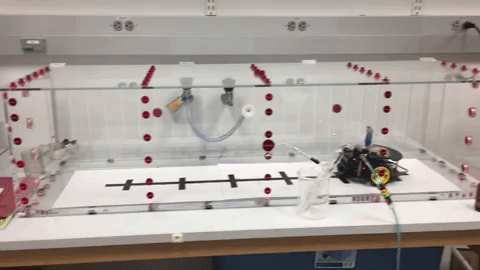Are there some means to guide these locusts—to instruct them where they need to go to do their sniffing? And since these cyborg bugs cannot speak, is there a means to read their brains to find out what exactly they smell? For that matter, are these insects even capable of smelling explosives?
The answer is “yes” to the first two questions.
The answer is again “yes.”
In a pre-proof of a study, published online in the Biosensors & Bioelectronics: X journal on August 6th, 2020, scientists demonstrated how they successfully hijacked the olfactory system of a locust to detect and differentiate between different kinds of explosive scents—all in just a few hundred milliseconds of exposure.
Moreover, the team has successfully improved a previously designed biorobotic sensing system that can possibly identify the firing neurons of the locusts and transmit that data in a way that informed scientists about the kinds of smells being sensed by the locusts.
We didn’t know if they’d be able to smell or pinpoint the explosives because they don’t have any meaningful ecological significance. It was possible that they didn’t care about any of the cues that were meaningful to us in this particular case.
Barani Raman, Professor, Department of Biomedical Engineering, Washington University in St. Louis
A previous study performed in Raman’s laboratory revealed that it is possible to decode the olfactory system of the locust as an “or-of-ands” logical operation. This enabled the team to establish the kind of things smelled by a locust in different contexts.
Armed with this understanding, the team was able to detect analogous patterns when they subjected the locusts to vapors from a chemically varied set of explosives, such as PETN, TNT, RDX, DNT, and ammonium nitrate.
Most surprisingly, we could clearly see the neurons responded differently to TNT and DNT, as well as these other explosive chemical vapors.
Barani Raman, Professor, Department of Biomedical Engineering, Washington University in St. Louis
With that significant piece of information, “We were ready to get to work. We were optimized,” added Raman.
Now, the researchers knew that different explosives could be detected and differentiated by the locusts, but to search for a bomb, a locust should know the kind of direction the odor is coming from. Enter the “odor box and locust mobile.”
You know when you’re close to the coffee shop, the coffee smell is stronger, and when you’re farther away, you smell it less? That’s what we were looking at.
Barani Raman, Professor, Department of Biomedical Engineering, Washington University in St. Louis
The researchers injected the explosive vapors through a hole in the box, in which the locust sat in a very small vehicle. As the insect was driven around and sniffed varying levels of vapors, the team investigated its brain activity associated with odors. These variations in vapor concentration were reflected by the signals in the bugs’ brains.
The subsequent step for the team is to improve the system to convey the brain activity of the locusts.
The research team, including Shantanu Chakrabartty, the Clifford W. Murphy Professor in the Preston M. Green Department of Electrical & Systems Engineering, and also Srikanth Singamaneni, the Lilyan & E. Lisle Hughes Professor in the Department of Mechanical Engineering & Materials Science, targeted the breadth of their know-how on the small locust.
To cause minimal harm to the insects and keep them stable to precisely capture their neural activity, the researchers developed a novel surgical procedure to fasten electrodes that did not prevent the movement of the locusts.
Using their novel instruments, the researchers successfully resolved the neuronal activity of this insect—subjected to an explosive smell—into a distinct odor-specific pattern in just 500 ms.
“Now we can implant the electrodes, seal the locust and transport them to mobile environments,” Raman added.
In the future, that setting might be one where Homeland Security is looking for explosives.
According to Raman, the concept is not as peculiar as it might initially sound.
“This is not that different from in the old days, when coal miners used canaries. People use pigs for finding truffles. It’s a similar approach—using a biological organism—this is just a bit more sophisticated,” Raman concluded.
The study was financially supported by grants (N00014-16-1-2426, N00014-19-1-2049) from the Office of Naval Research.

Image Credit: Washington University in St. Louis.
Journal Reference:
Saha, D., et al. (2020) Explosive sensing with insect-based biorobots. Biosensors & Bioelectronics: X. doi.org/10.1016/j.biosx.2020.100050.